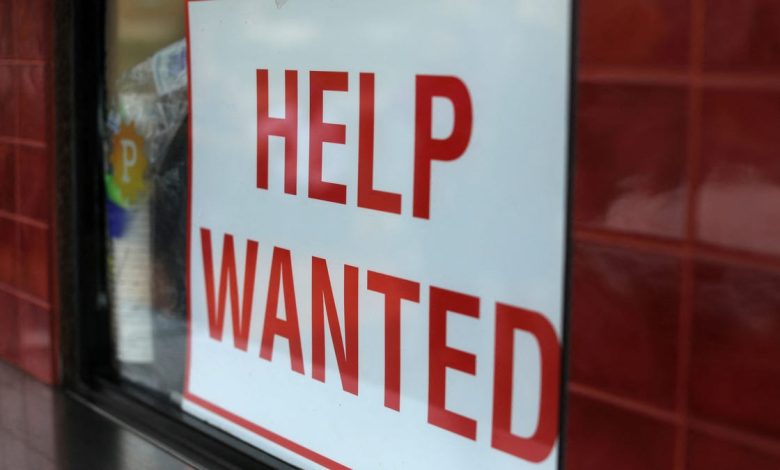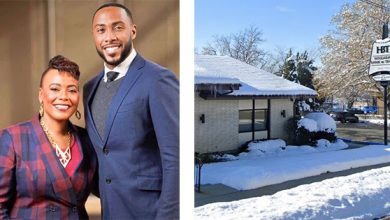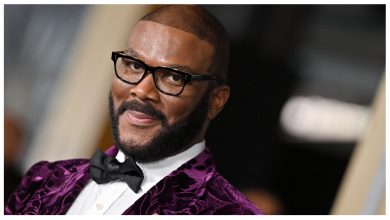Black unemployment rate jumps, stirring economic fears

The surge in unemployment among Black Americans could be a troubling sign for the economy, since this segment is often the first hit by economic downturns.

How to navigate a job market transformed by AI
Entry level jobs that were once the gateway to upward mobility are disappearing fast. How can applicants prove their human worth to hiring managers?
While economists have viewed the U.S. labor market as resilient in recent months, some warn that cracks have started to emerge – including among the country’s Black workforce.
The unemployment rate for Black Americans hit 7.2% in July, up from 6.3% a year ago and 6.8% the month prior, according to the most recent jobs report from the Labor Department. The most recent surge follows an eye-popping 13% increase from May to June and puts the metric well above the total unemployment rate of 4.2%.
Black women in particular have seen a dramatic increase in unemployment over the past year, from 5.5% to 6.3%. Certain states are also seeing exceptionally high unemployment rates for Black people, with some, including Michigan, hovering near 10%, according to the Economic Policy Institute, a left-leaning think tank.
Economists say the surge in unemployment for Black people this year could be a troubling sign for the economy at large, since this segment is often the first hit by economic downturns. Other ethnic groups may already be seeing the effects of a weakening labor market; unemployment rates among White, Asian and Hispanic or Latino workers ticked up 0.1, 0.4 and 0.2 percentage points in July, respectively. Plus, the picture of a strong labor market took a hit with the release of the most recent jobs report, which showed payroll gains for May and June were revised downward by 258,000.
“The Black unemployment rate is always the first to go up. That’s always the canary in the coal mine,” said Gbenga Ajilore, chief economist at the nonpartisan Center on Budget and Policy Priorities.
Why are unemployment rates among Black workers increasing?
Economists told USA TODAY the recent job cuts within the federal government could be hitting Black workers especially hard because they make up a significant share of the workforce.
Overall, Black Americans account for 18% of the federal workforce as of September, compared to 12% of the overall workforce, according to a May National Women’s Law Center report. Black employees make up an even larger share at some of the agencies that have seen some of the most severe job cuts, like the Department of Education (36%), U.S. Agency for International Development (21%) and the Health and Human Services Department (20.5%), according to September figures from the U.S. Office of Personnel Management.
The difference is even more stark for Black women, who made up roughly 12% of the federal workforce, nearly twice their participation rate in the civilian labor force, according to 2021 data from the U.S. Equal Employment Opportunity Commission.
“This has been a place where Black people are disproportionately more likely to get jobs – better jobs, well-paying jobs,” Ajilore said.
Economists point to business uncertainty under the country’s shifting trade policy as another potential driver, with companies pausing major decisions like hiring until they have a better understanding of how tariffs will impact their bottom line. A recent survey from the National Association for Business Economics found 1-in-4 companies plan to delay hiring or investments over the next six months.
The Trump administration’s push to eliminate diversity, equity and inclusion, or DEI, programs in the federal government, education and the private sector could also play a role in the recent unemployment figures, creating an “antagonistic posture against the Black workforce” that may be hurting Black hiring rates, according to Andre Perry, a senior fellow and director of the Center for Community Uplift at the Brookings Institution.
DEI programs often fell short of their goal to close racial gaps – Black Americans are still outnumbered 12 to 1 by White people in executive roles, for instance. But the pullback may still impact Black Americans’ careers and the diversity of executive suites. USA TODAY previously reported that in 2023, as the Supreme Court struck down affirmative action in college admissions and conservative groups targeted DEI efforts at dozens of companies, the ranks of Black executives fell 3% from the prior year, twice the rate of White executives.
“It’s one of those things where I think it plays a role (in this year’s unemployment data), but it’s so difficult to actually pinpoint,” said Ajilore. “There’s no smoking gun.”
And while Black employees have benefited from a tight labor market in recent years, he said they may now be more at risk of “last hired, first fired,” or the practice of letting the most recently hired employees first, as the labor market cools.
Which states have the highest unemployment rates among Black Americans?
Certain communities have seen even more dramatic unemployment gains among Black workers.
In Michigan, the unemployment rate for Black people hit 10% in the first quarter – nearly double the state’s total unemployment rate and up 3.2% from 2020, according to the Economic Policy Institute. South Carolina’s rate jumped 3% to 6.9% in that time frame.
South Dakota, Alabama and Maryland had some of the lowest rates at 2.8%, 4.3% and 4.3%, respectively.
“The aggregate (labor market) numbers really mask what’s going on at the local level,” Perry said. “So you see in some places, Black people are in a recession by the looks of it. In other places, Black employment is faring much better.”
Is this a warning for the economy?
Elizabeth Crofoot, senior economist and principal researcher at Lightcast, said recent employment data is “alarming.” While she said it was unclear based on earlier figures if the unemployment surge for Black Americans was caused by blips in the data from small sample sizes, she said July’s data paints a more detailed picture of declining Black labor force participation.
“The labor market data from BLS (Bureau of Labor Statistics), it’s volatile month to month – especially because those response rates are not as high as they used to be, so there is a lot of noise in the data,” she said. But “this is looking like an emerging trend.”
That could spell bad news for the economy at large. Crofoot said unemployment among Black people tends to rise first in a weakening economy, “oftentimes due to equity issues.”
She pointed to occupational segregation ‒ when different demographic groups are more likely to be concentrated in certain parts of the workforce ‒ as one driver, pointing to how Black employees have a stronger presence in some of the industries that have seen job declines such as the federal workforce, manufacturing (which shed 11,000 jobs between June and July), wholesale trade (which lost 7,800 jobs).
“There are certain sectors of the economy where there are more African Americans … and typically those jobs are also not the best jobs,” she said. “Especially in retail, for example, or lower-end health care sector jobs.”
Ajilore pointed to Labor Department data that shows more than 300,000 Black women lost their jobs in the first half of 2025 as another sign the rise could be the start of a long-term trend.
Rising unemployment for Black Americans may not be the only crack in the labor market data. Recent graduates have struggled to find work amid the rise of artificial intelligence and business uncertainty related to tariffs. And job gains this year have been concentrated in areas like health care; leisure and hospitality; and among state and local governments.
Overall, U.S. employers added just 73,000 jobs in July, below the 105,000 economists expected.
“The labor market is slowing down,” Ajilore said. “It’s one of those things where looking at Black unemployment rate and Black labor market indicators told us this story was coming.”
Contributing: Jessica Guynn and Jayme Fraser, USA TODAY




